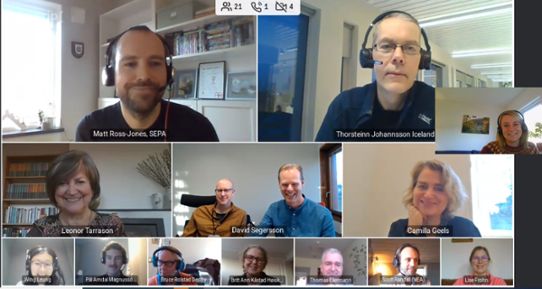Air quality models are important tools for municipalities that want to evaluate and analyze pollution levels in urban air. To provide guidance on the use of air quality models, SMHI runs the Swedish Reference Laboratory (Reflab) on behalf of the Swedish Environmental Protection Agency.
Recently, Helene Alpfjord Wylde and Wing Leung, air quality experts at SMHI, held a Nordic meeting to talk about air quality modelling. Among the participants were representatives from Norway, Finland, Iceland and Denmark, as well as from the Swedish Environmental Protection Agency. The aim of the meeting was to share experiences between the Nordic countries and to have a dialogue on how the Nordic air quality problems can be better handled.
Lessons learned and shared experiences
Matthew Ross-Jones, Swedish Environmental Protection Agency, and Helene Alpfjord Wylde, SMHI, presented how Sweden is currently working with air quality modelling, which activities are carried out and what difficulties are encountered. The Nordic countries also shared their experiences in the area.
By sharing these experiences with each other, the different actors became aware of how different issues are handled in the different countries, primarily related to the EU Ambient Air Quality Directive. As the EU is currently revising its directive, many of the questions circulated around what that outcome might mean.
This was the first Reflab meeting focused solely on air quality modelling in the Nordic countries and it was very appreciated. The meeting was characterized by dialogue and showed that most of the Nordic countries are active and ambitious when it comes to working with dispersion modelling. It also highlighted that there are several planned developments for the future. The meeting ended with ideas about important issues for future co-operation, such as in small-scale residential heating.
